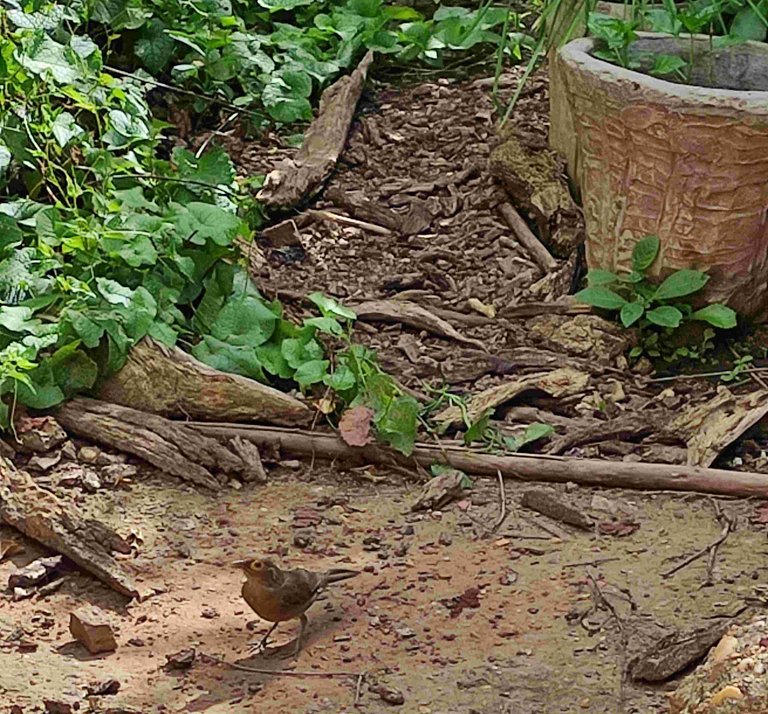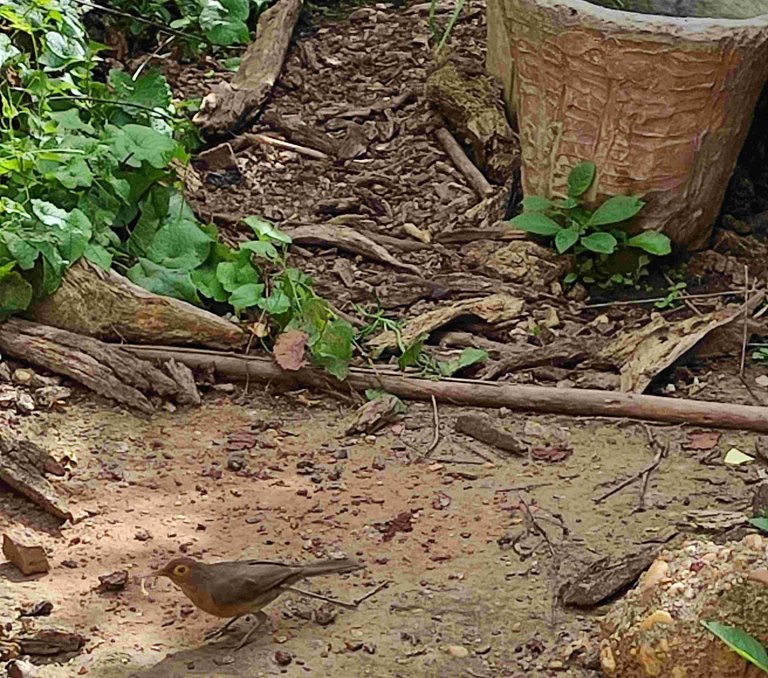
Greetings, beautiful Feathered Friends Community After a long time today I returned, with some photos that I was able to take of one of the winged inhabitants of my backyard. I think I have mentioned it before, and that on my lot there is a great diversity of animal species, including birds, but these are very shy, so it is very difficult to photograph them.
Saludos, hermosa comunidad Feathered Friends Luego de mucho tiempo hoy he retornado, con algunas fotos que pude tomar a uno de los habitantes alados de mi patio trasero. Creo haberlo comentado antes, y es que en mi solar hay una gran diversidad de especies animales, entre ellas aves, pero estas son muy tímidas, por lo que es muy difícil fotografiarlas.


En la tarde de hoy, me asomé a la puerta, y pude ver una hermosa Paraulata ojos de candil (Turdus nudigenis), que a mi parecer es hembra. Esta ave es muy curiosa, pero a la vez esquiva, asustadiza, por lo que me detuve en la puerta, mientras la observaba, para luego fotografiarla. Sorprendentemente esta ave no se espantó del todo, pues me miraba con curiosidad, mientras recogía algo de alimento del suelo. Obviamente no me moví de mi lugar, sólo tomé mi teléfono para intentar fotografiarla.



Estas aves son muy comunes en mi patio trasero, y siempre me ha llamado la atención que hacen mucha vida cerca del suelo. A veces las veo desplazarse con pequeños y rápidos saltos en el suelo, otras veces dan cortos recorridos volando, también a ras de suelo. Son muy expresivas, ya que cuando se sienten sorprendidas, parece que les avergüenza, (miedo quizás sea lo que sienten), y se van volando. También les encanta bañarse en el bebedero que coloco en esa área, y estas aves se deleitan picoteando las guayabas.



Su plumaje no es llamativo, pues las plumas de la parte superior y espalda, son marrones, mientras el abdomen en más claro. Lo que sí es distintivo, son los círculos amarillos alrededor de los ojos de ellas, lo que les da su nombre: Paraulata ojos de candil (ojos de fuego). Cabe señalar que esta especie es diferente a la Paraulata llanera (Mimus gilvus). Es un ave con un tamaño de aproximadamente 23 cms, es muy ágil también.


De acuerdo a la bibliografía consultada (ver el link al final), esta ave se distribuye en las Antillas Menores y en la parte Norte de Sudamérica, específicamente Colombia, Venezuela y Norte de Brasil, por lo que es lógico poderla ver en donde vivo. La información también indica que construye sus nidos cerca del suelo, y sus huevos son azules oscuros con chispas rojas, aunque no he tenido la ocasión de observar los huevos, aunque sí presumo que anidan cerca del suelo, porque las veo siempre en esa área.



Esta ave me estuvo observando un rato, recogió algún alimento del suelo, y luego se fue dando pequeños saltos hacia el árbol más grande de acerola. Al menos esta ave tuvo la gentileza de dejarse fotografiar.



Aquí termino mi post de hoy, en el que les he compartido las imágenes de un ave gentil y singular, que habita en mi solar. Y recuerden: No todos los días son iguales y más importante aún: Todo lo que das, inexorablemente volverá a ti. ¡Abrazos!



Todo el contenido, (excepto los separadores de texto) es de mi propiedad y está sujeto a derechos de autor // All content (except text dividers) is my property and is subject to copyright.




Delegations welcome!

Posted Using InLeo Alpha
Your bird photos should be amazing - it's a wonder the bird didn't fly off while being photographed.🐦📸
Yes, that surprised me a lot, I didn't think that bird would stay still for so long to be able to photograph it. Thank you for your visit @hive.samadi
Hola querida amiga @sirenahippie buen día
Tienes una propiedad con un fondo realmente hermoso, que bueno que puedas salir y hacer hermosas tomas de las aves que habitan allí.
Debo de admitir que nunca antes había leído sobre esta hermosa especie ¨Paraulata de ojos de linterna¨
Preciosas tomas, aprecio que nos hayas presentado este bello ejemplar
Hello dear friend @sirenahippie good day
You have a property with a really beautiful background, how nice that you can go out and take beautiful shots of the birds that live there.
I must admit that I had never read about this beautiful species "Lantern-eyed Paraulata" before
Beautiful shots, I appreciate that you have introduced us to this beautiful specimen
Hola @jlufer, muchas gracias por tu bonito comentario. Esta ave es endémica de la parte Norte de Sudamérica. Es habitual verlas en el solar,son hasta cómicas, por lo expresivas que son. Saludos, que tengas una estupenda semana.
Nice👍👍
Thanks @reachdreams
You're welcome.
Thanks for your support!